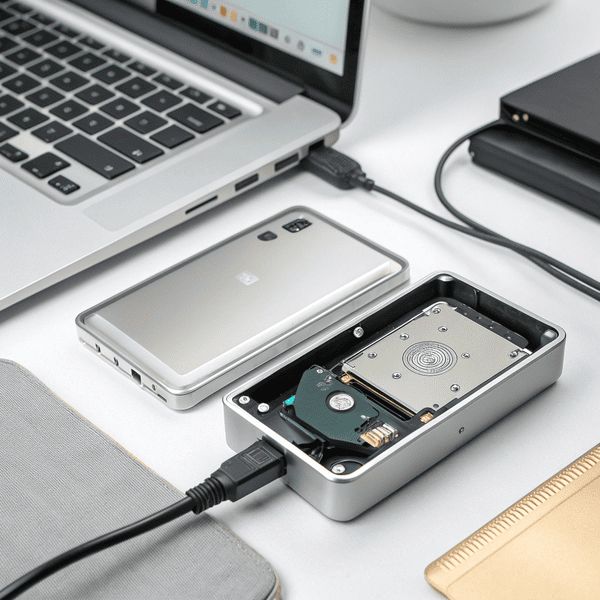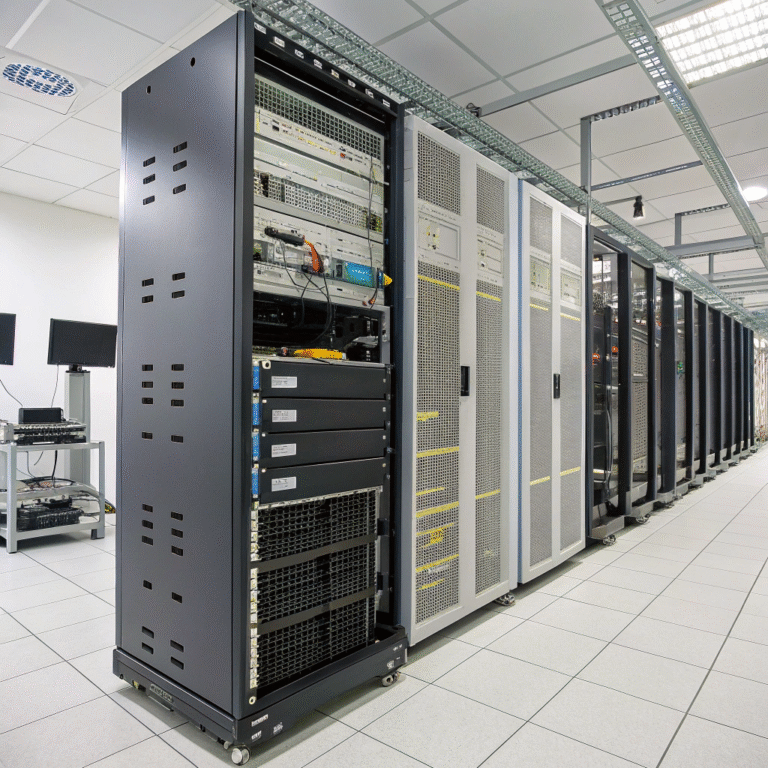I often wonder if it’s possible to take apart an external SSD, remove the drive inside, and use it as an internal drive. Many professionals want more storage speed without buying a brand-new SSD.
You can often open up an external SSD case and install the SSD inside your PC if the drive uses a standard You can often open up an external SSD case[^1] and install the SSD inside your PC if the drive uses a standard SATA or NVMe interface, but not all enclosures allow this.
[^1]: Understanding external SSD cases can help you choose the right one for your needs and ensure compatibility.
, but not all enclosures allow this.
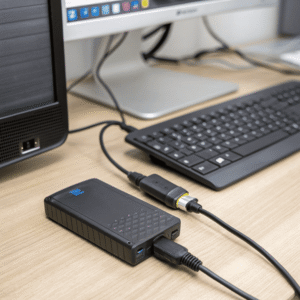
The first time I considered this, I wanted a fast upgrade without wasting a working drive. It was also a way to save money and learn what’s really inside those slick cases.
Can you put an external SSD inside a PC?
It seems wasteful to have a fast SSD locked in a portable box while your PC could benefit from extra speed. The good news—sometimes it’s easy.
You can put an external SSD inside a PC, but only if the SSD inside the enclosure uses a regular You can put an external SSD[^1] inside a PC, but only if the SSD inside the enclosure uses a regular SATA or NVMe connection and is not soldered or custom-made.
[^1]: Understanding external SSDs can help you choose the right storage solution for your needs.
and is not soldered or custom-made.
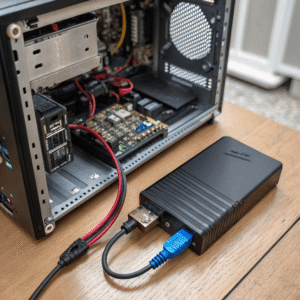
I once took apart an older USB 3.0 SSD. Inside, I found a normal 2.5-inch SATA SSD, easily installable in any PC or laptop with a matching port. However, not all manufacturers make it this simple. Some external SSDs use custom circuit boards, proprietary connectors, or glue the whole thing together. Here’s what you’ll find most often:
| Enclosure Type | Internal Drive Likely? | Easy to Install? |
|---|---|---|
| 2.5-inch SATA enclosure | Very likely | Yes, almost always |
| M.2 NVMe enclosure | Often | Common, check key type |
| Proprietary/dedicated build | Rarely | No, may not be possible |
| Soldered drive | No | Not possible |
Checking the product specs, or opening carefully, shows what’s really inside.
How to open a portable SSD enclosure?
Some cases are straightforward to open, while others feel almost designed to resist your efforts. I’ve opened a fair share—sometimes with great results, other times not so lucky.
To open a portable SSD enclosure, use aTo open a portable SSD enclosure[^1], use a plastic pry tool or a small screwdriver to gently separate the casing. Remove screws or stickers if present, and avoid damaging the clips or the drive inside.
[^1]: Understanding portable SSD enclosures can help you choose the right one for your storage needs.
or a small screwdriver to gently separate the casing. Remove screws or stickers if present, and avoid damaging the clips or the drive inside.
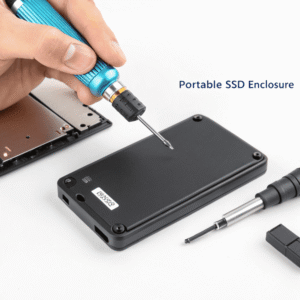
In my experience, always look for visible screws first—usually hidden under rubber feet or labels. If there are no screws, the shell probably snaps together. Use a plastic pry tool instead of metal to avoid scratching or breaking the enclosure. Work around the edges gently until you feel the clips release. Inside, you should see the drive and a small adapter board. Here’s my usual process:
| Step | What to Do | Why |
|---|---|---|
| Check for screws | Look under labels or feet | Easy to open without force |
| Use pry tool | Work along edges, not corners | Prevents breakage |
| Separate halves | Gently, to avoid snapping plastic | Reuse or re-sell enclosure |
| Remove adapter | Disconnect SSD from interface board | Prepare for PC install |
It may be tricky, but patience keeps your drive and case reusable.
Can you just plug an external hard drive into a PC?
Sometimes, using external drives for storage feels easier than opening your PC. Many wonder if plugging it in right away is enough for real work.
You can plug an external hard drive or SSD into any PC using USB. The drive will work for file transfers, backups, or even running software, but won’t match You can plug an external hard drive[^1] or SSD into any PC using USB. The drive will work for file transfers, backups, or even running software, but won’t match internal SSD speed.
[^1]: Explore this link to understand the advantages of external hard drives for storage and data management.

I often use external drives for backups or quick file swaps between machines. You just connect via USB, and the device shows up instantly. However, external drives are not as fast as directly installed internal drives, especially for heavy tasks like video editing or running virtual machines. They are best for data movement and quick access but not as a true replacement for fast system storage. Here’s how both methods compare:
| Use Case | Plug in External Drive | Install as Internal |
|---|---|---|
| File transfers/backups | Perfect | Also works |
| Boot drive or OS | Not ideal | Best/recommended |
| Performance (speed) | Lower, USB-limited | Highest possible |
| Ease of setup | Simple plug and play | Requires PC opening |
External drives are easy and safe, just not as powerful as “real” internal storage.
Conclusion
You can often turn an external SSD into an internal one, but success depends on the drive and case. Always check compatibility before opening and expect some trial and error.

